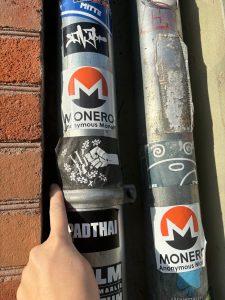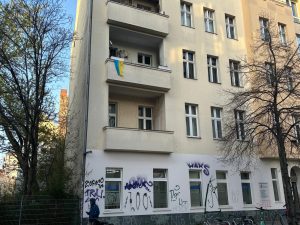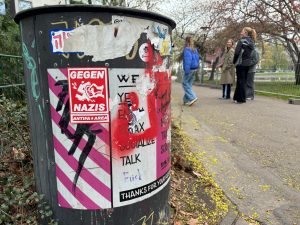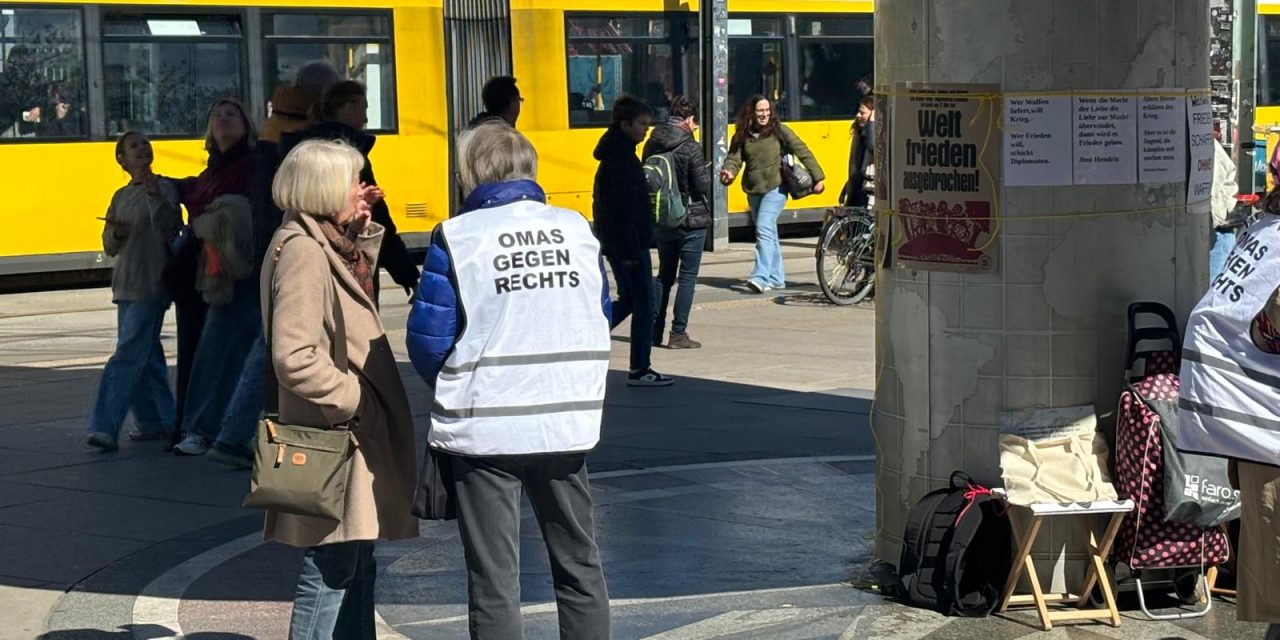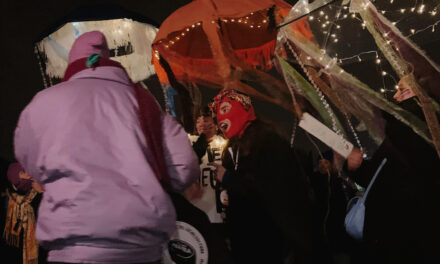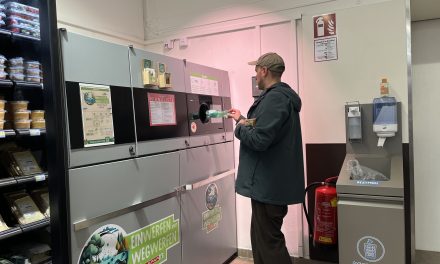Someone who glues their hands to the road to advocate for climate change or thousands of people gathering at the Alexander Platz against the far right. You can’t go a long time without hearing about some form of protest going on in Berlin. The political switch towards the right has sparked the conversation about activism again. How has activism changed in recent years and what is the effect on the sense of unity among people?
You can’t talk about Berlin without mentioning activism. The two walk side by side through history and into the present. It’s in the news, on the streets, and in every corner of the city. Whether it’s a massive protests, people collecting signatures, street art, graffiti, flags, or discussion groups, there’s always something happening. As the capital of Germany and the seat of its government, Berlin is more than just a metropolis. It’s no surprise the city is often called the ‘activist heart of Germany.’
In Germany, as like many other countries in Europe, the political landscape has shifted towards the right. The radical right-wing Alternative for Germany (AfD) is at the moment the largest party. The recent political changes have motivated activists to speak out across the country. Not just this change triggered people to speak out, but also other events have let to the rise of activism in Germany in recent years.

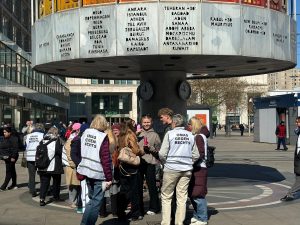
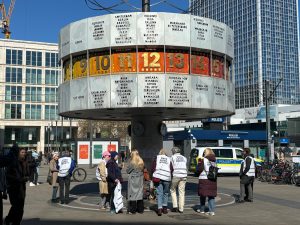
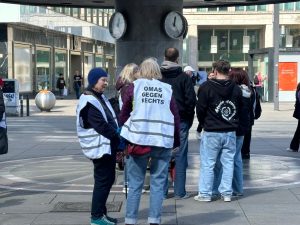
Increase in activism
It’s quite difficult to measure activism because there are many things covered by the term and not everything is documented, but a comparison can be made throughout the years. Prof. Dr. Sebastian Haunss is a political scientist and works for the Institute for Protest and Social Movement Studies. He sees a general trend of increasement in activism starting from the 2000’s. ‘This rise is strongly driven by individual events. It’s not a straight line going upward, but it has its peaks when a change in society occurs.’
He says that in 2015 this peak was the migration crisis. And then in 2019 there were a lot of protests done by Friday for Future (FFF). During covid there were less activist events because of the lockdown. And then the beginning of 2024 and 2025 peaked as well because of the changes surrounding the right winged party in Germany. So the number of protests have increased but it depends on what moment in the year you look at. ‘Right now the estimated amount of registered activist acts in Berlin are 3000 a year. That is more than 10 events a day in just Berlin.’
Max Franck was born and raised in Berlin and together with co-founder Muriel Born makes a magazine named Konstructiv-Magazin. In the articles they discuss social problems in Berlin with the goal to make people talk with each other again. Franck sees the rise of activism happening in front of his eyes. ‘I think since FFF there has been a change in activism. It was more reported in the news and then it gained more popularity. You also hear extreme acts like gluing yourself to the street more often than before. I feel like because of mostly climate change, people have the mindset of ‘if we don’t do something, nobody will.’ Also in the daily life he notices activism more often than before. ‘There already were signs and quotes on the streets before but lately it has become more noticeable by graffiti, stickers and signs.’

‘World Solidarity ‘


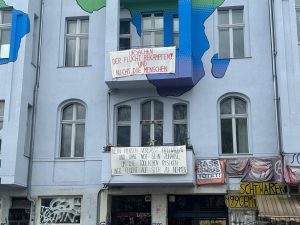
‘Fight the causes and not the people’
‘No one leaves their home voluntarily to take the deadly risk of fleeing’

Media reporting activism
In recent years (social) media played a big role in the increase of activism. Research by the UvA shows that you can reach a larger audience through social media and the receiver, for example the government, can notice the message quicker. Its also way easier to get people to join a protest. Prof. Dr. Haunss thinks the way activists are portrayed in the media is also very important for activism to work. ‘Protests always addresses somebody else. It’s a form of public communication and it somehow needs to reach their addressees, but the addressees are not always the ones seeing the protest directly. That’s why reporting about a protest is very important. The traditional media play a very important role in multiplying the protest. Some people say: If it’s not reported, it’s not there.’
Franck thinks the media can also have a negative effect on activism. ‘The past years the media payed attention to lots of extreme examples of activism. Like blocking the highway or throwing paint on paintings in museums. I feel like these actions and the reporting on it really annoyed other people. The organization Last Generation was hated so much that they were attacked. The problem with that is that the topic of climate change was forgotten. The extreme act was mentioned more than the problem they advocated for. People didn’t want to hear about climate change anymore.’
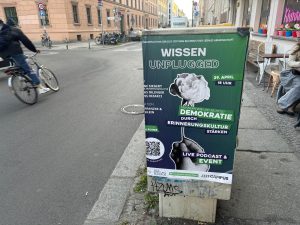
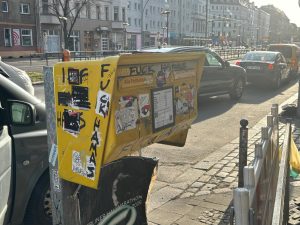

‘Whoever fights against the Nazis cannot rely on the state at all’
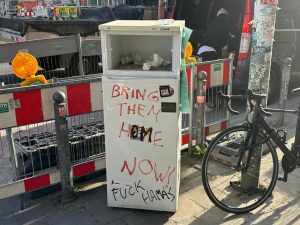
Activism: connecting or drifting people apart?
Activism has two sides. On the one hand, it can be unifying because you work together in a group with the same values and believes, but it can also be the other way around. When it comes to migration, there is a strong division of two groups in Germany with both opposite believes. Prof. Dr. Haunss believes that activism can actually be beneficial to the social cohesion of German inhabitants. ‘Protest is a form of conflict and you often think social cohesion is the opposite of conflict. But I would say that social cohesion has been realized when society has find peaceful means and find a non-violent way of solving conflict. So protest is a way for people to let their voice be heard but still within democratic rules. If it’s not hurting or killing people then it’s a public communication. So in general protest is usually a sign of a healthy democratic society which is good for social cohesion.’
The current activism is also looked differently than before. In the 1950’s activism was less common. It was seen as an unconventional way of political participation. But nowadays it has become more conventional. So people have less aversion to it and that also makes it more connecting.
Franck thinks that the current society is drifting apart because people talk to less with each other. ‘People talk to people who have the same believes, but not to people who have a different point of view. With the magazine we are making we hope to highlight all sorts of opinions so people will come together. Activism can be a bonding thing but also can make people more individual and make them stay in their own bubble. Being open to hearing other opinions will bring us together as a society.’
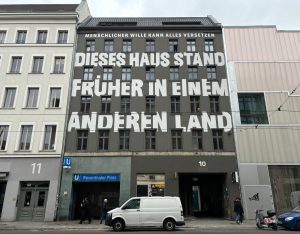
‘Human power can change anything. This house just to be in another country’

